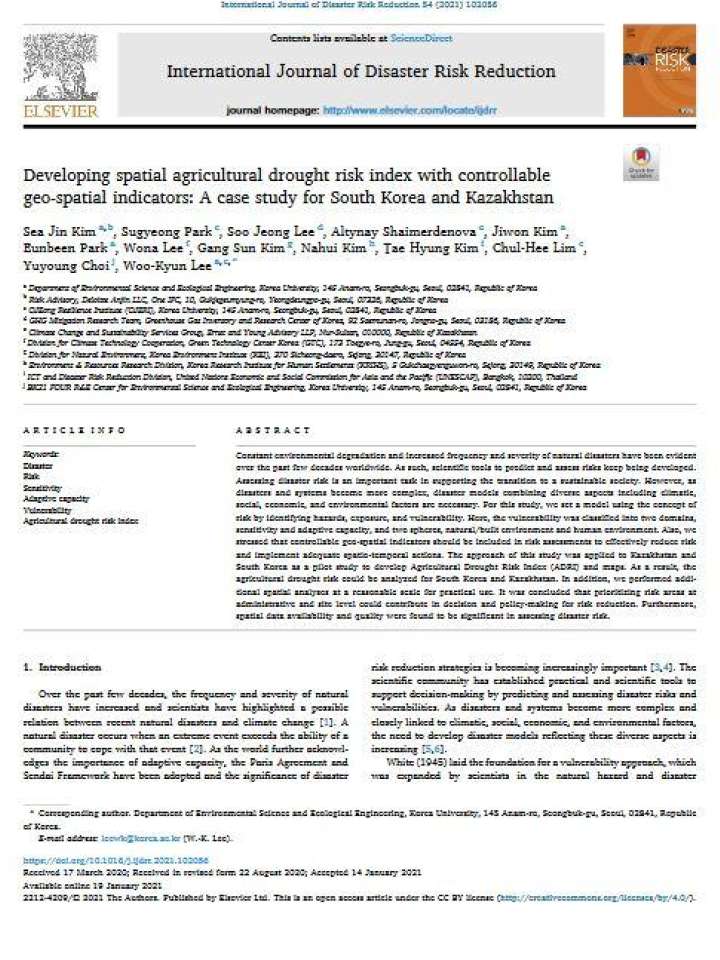Developing spatial agricultural drought risk index with controllable geo-spatial indicators: A case study for South Korea and Kazakhstan
As disasters and systems become more complex, disaster models combining diverse aspects including climatic, social, economic, and environmental factors are necessary. For this study, the researchers set a model using the concept of risk by identifying hazards, exposure, and vulnerability. Here, the vulnerability was classified into two domains, sensitivity and adaptive capacity, and two spheres, natural/built environment and human environment. Also, they stressed that controllable geospatial indicators should be included in risk assessments to effectively reduce risk and implement adequate Spatio-temporal actions.
The approach of this study was applied to Kazakhstan and South Korea as a pilot study to develop Agricultural Drought Risk Index (ADRI) and maps. As a result, the agricultural drought risk could be analyzed for South Korea and Kazakhstan. In addition, the authors performed additional spatial analyses at a reasonable scale for practical use. It was concluded that prioritizing risk areas at administrative and site-level could contribute in decision and policy-making for risk reduction. Furthermore, spatial data availability and quality were found to be significant in assessing disaster risk.
Explore further
